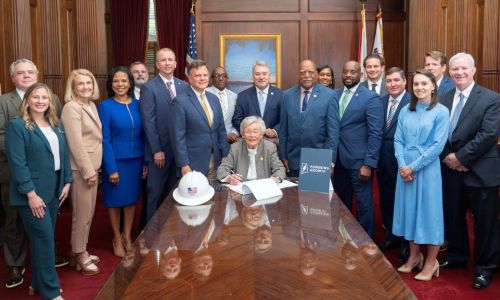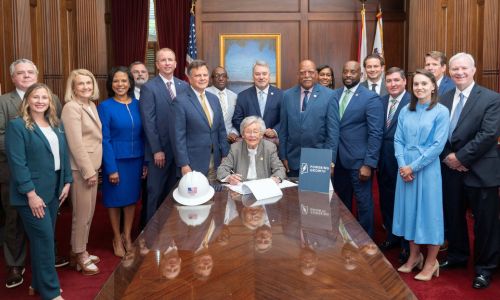Montgomery, AL — Governor Kay Ivey has signed into law a sweeping new legislative package aimed at strengthening Alabama’s energy infrastructure, enhancing economic development, and addressing vulnerabilities in the state’s energy supply chain. The initiative, titled the “Powering Growth” plan, is designed to reinforce Alabama’s position as a leader in industrial growth by ensuring reliable access to energy resources across both urban and rural regions.
The legislation includes the creation of the Alabama Energy Infrastructure Bank (AEIB), a new financing entity intended to support power infrastructure projects connected to industrial and job growth. The plan also outlines strategic goals to reduce permitting delays, improve site readiness for businesses, and mitigate supply chain issues affecting critical energy components.
“In order to keep Alabama’s economy growing, we’ve got to make sure that we have the power to support it,” said Governor Ivey. “This plan ensures we’re prepared to compete, not just with neighboring states, but on a national level.”
Key Elements of the Powering Growth Plan:
-
Streamlined Permitting: The legislation simplifies regulatory processes for energy infrastructure projects, with the goal of accelerating project timelines and reducing development costs.
-
Supply Chain Improvements: Targeted measures aim to address delays in obtaining critical materials and equipment, a factor identified as a growing challenge in energy infrastructure development.
-
Industrial Site Readiness: The plan provides funding to make more industrial sites energy-ready, allowing local communities to better compete for new economic opportunities by eliminating delays tied to power access.
-
Alabama Energy Infrastructure Bank: The AEIB will offer flexible financing to support expansion of the state’s energy grid and infrastructure, leveraging both public and private investment while avoiding tax increases.
Commerce Secretary Ellen McNair emphasized that access to reliable energy is consistently a top concern for businesses selecting industrial sites. “The demand for energy is growing exponentially nationwide,” she said, noting that the new plan builds upon Alabama’s prior economic strengths while preparing for future growth.
The Alabama Growth Alliance, a public-private coalition focused on economic development, played a key role in shaping the initiative. The alliance identified energy capacity and supply chain resilience as essential components for Alabama’s continued competitiveness.
Several state leaders, including Senator Arthur Orr, House Speaker Nathaniel Ledbetter, and Senate Pro Tem Garlan Gudger, voiced support for the legislation. Each emphasized the importance of energy reliability in attracting industries and ensuring that rural areas are prioritized in the rollout of new infrastructure investments.
“Powering Growth is truly a visionary plan,” said Senator Orr. “As energy demand is going to continue to accelerate, we are laying the groundwork now to ensure we are able to compete and win on economic development projects for decades to come.”
Speaker Ledbetter added that the legislation was crafted with a long-term outlook, balancing energy capacity with sustainable practices and fiscal responsibility.
“This represents a strategic investment in our state’s future,” he said, “ensuring we have the energy resources necessary to support job creation and economic growth for generations to come.”
Senate Pro Tem Gudger noted that particular attention was paid to ensuring rural communities benefit from the plan. “We worked to include language in these bills that ensures a significant portion of this investment goes to rural Alabama,” he said.
The legislation echoes similar federal policy directions aimed at supporting energy and infrastructure development, aligning Alabama’s approach with national trends in economic competitiveness and energy resilience.
With the Powering Growth plan now signed into law, state agencies and partners are expected to begin implementation in the coming months, with particular focus on launching the Energy Infrastructure Bank and identifying priority industrial sites for development.





